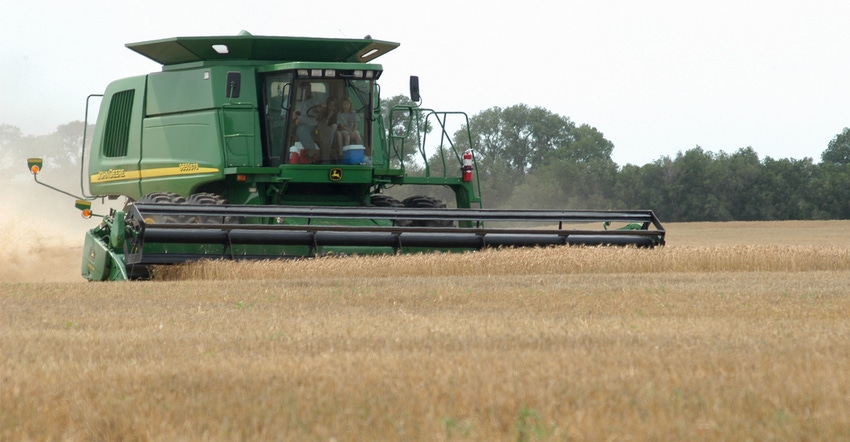
Another Kansas wheat harvest is in the bin (or on the ground) and the result is something of a testimony to the oft-touted “10 lives” of hard red winter wheat.
The 2017 crop certainly had to use up most, if not all, of that resiliency and for some fields, the lives ran out.
Even as the crop was just emerging in western counties, there were signs of struggles to come. By November, some fields had already been destroyed by the worst wheat streak mosaic virus infection in decades.
Drought was also a factor in the fall and over the abnormally warm winter. But nothing matched the antics of spring to challenge the crop.
WSMV continued to be an issue, especially in the western third of the state. Two late freezes in April challenged the central and north-central regions of the state.
Then came the freak blizzard of the last days of April, which buried the already-stressed wheat in western Kansas under as much as 2 feet of snow.
In the aftermath of that blizzard, which caused kinked stems and reduced straw strength, many producers watched in amazement as the crop stood up and headed out. Plenty of rain and moderate temperatures in May helped with the recovery.
June, however, was not as kind. A succession of thunderstorms brought massive hailstorms and high winds that wiped out some fields that were close to ready for harvest. WSMV continued its deadly progress, bringing heavy yield losses in much of western Kansas and a total wipeout of the crop in some areas.
Still, overall yields showed that hard red winter wheat is, indeed, a resilient crop. The USDA Agricultural Statistics Service estimated total yield at 324 million bushels, down from last year’s record but still remarkably close to average considering the reduction in acreage.
By the second week of July, harvest was close enough to a wrap that Kansas Wheat published its 17th and final Wheat Harvest Report.
That report noted that harvest was wrapping up in Bird City in far northwest Kansas, with the Bird City branch of Frontier Ag taking in between 700,000 and a million bushels — just below average for total production despite a reduction in acres planted.
Manager Ray Magnani said the area didn’t get as much hail as its neighbors to the south, but there were severe losses to WSMV.
"There was more this year than I have ever seen before, and I've been doing this for 25 years now," said Magnani.
Kernel characteristics were “very good” this year, Magnani reported. Test weights have averaged 61 pounds per bushel, but protein content is widely varied.
"Protein is all over the place," said Magnani. "We've seen some test at 15, but then we've seen some test way down into the 9s. Those numbers depended mostly on variety selection and the fertilizer programs the farmers chose for their crops.”
The Kansas Wheat final report also noted wide variability in The Sunflower K-State Research and Extension District that covers Cheyenne, Sherman and Wallace counties.
"It's been an interesting wheat harvest so far," said Jeanne Falk Jones, multi-county agronomist for the Sunflower District. "I don't remember a situation where we've had quite as much variability as we do this year."
She reported that the area is looking at the last days of the 2017 wheat harvest, but sparse showers over the last few days have slowed some farmers down a bit. This year, yields and test weights have been a “mixed bag” with everything from abandoned fields due to WSMV to yields upward of 80 bushels per acre. One of her farmers reported that showers had lowered test weights by up to 4 pounds, but the area ranges from the low 50s to 62 pounds per bushel, with test weights increasing toward the north.
Falk Jones knows that a big question mark for the area was the impact of the late-season snowfall in April.
"There were a lot of folks who were really worried about the wheat, and rightly so," said Falk Jones. "In all reality, it turns out those acres in our area mostly benefited from that moisture. We are seeing some of those higher yields because of the moisture gained in that snow."
Proteins were also highly variable in the area, but topped out at 14%. To learn more about protein, check out Falk Jones’ summary from how it's formed to how to boost yours at kswheat.com/all-about-protein.
This report includes information provided by Kansas Wheat.
About the Author(s)
You May Also Like




